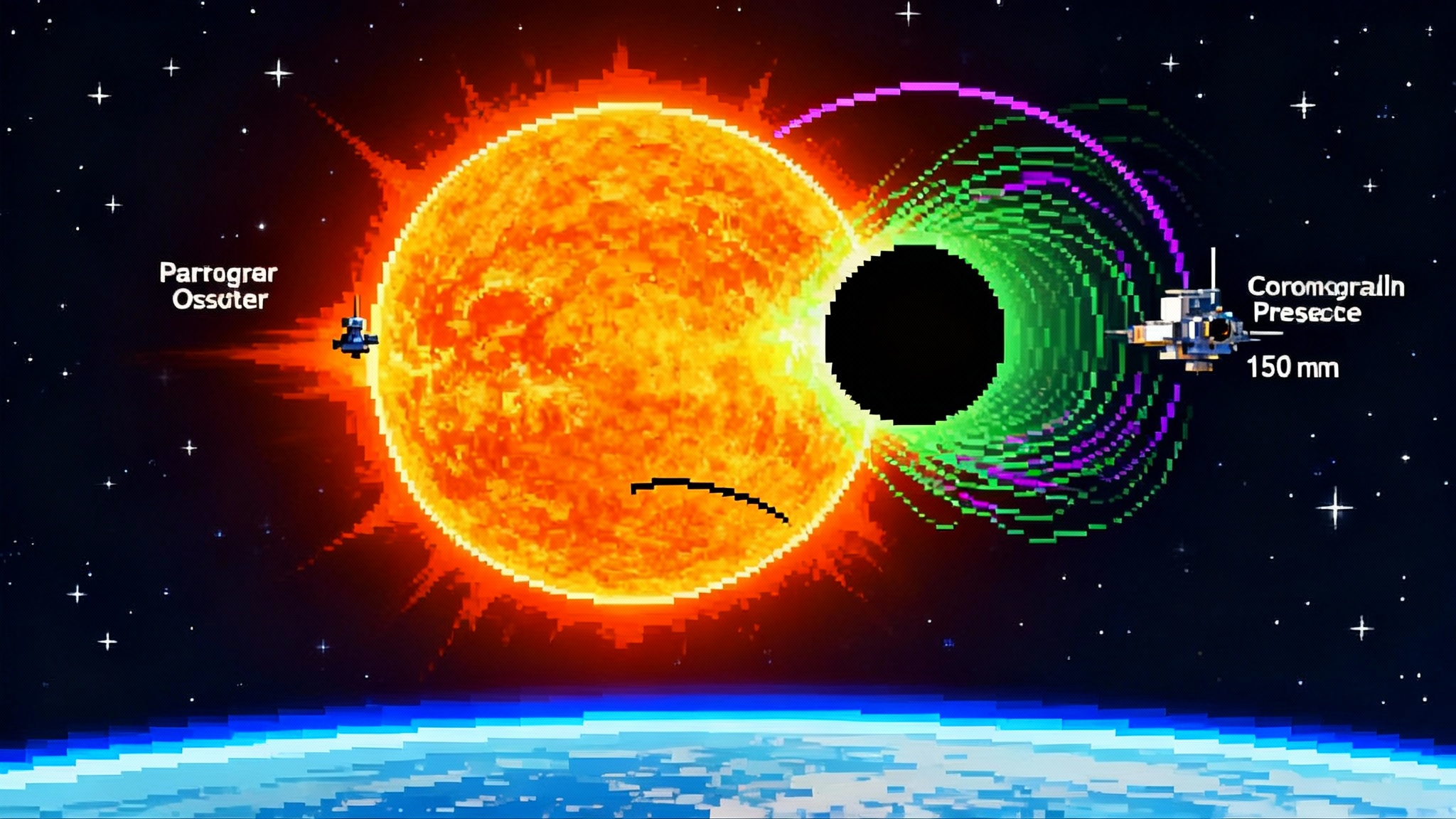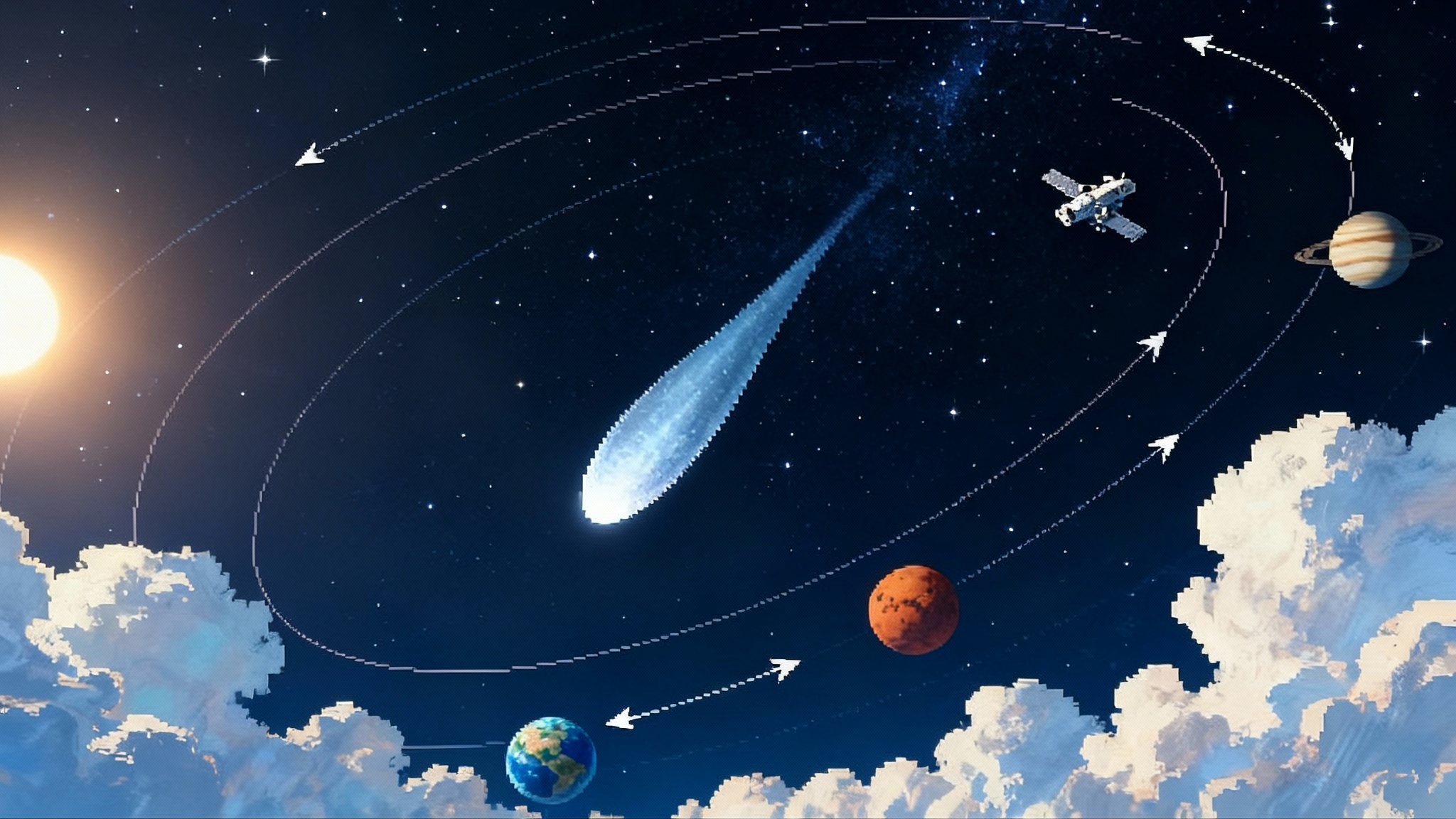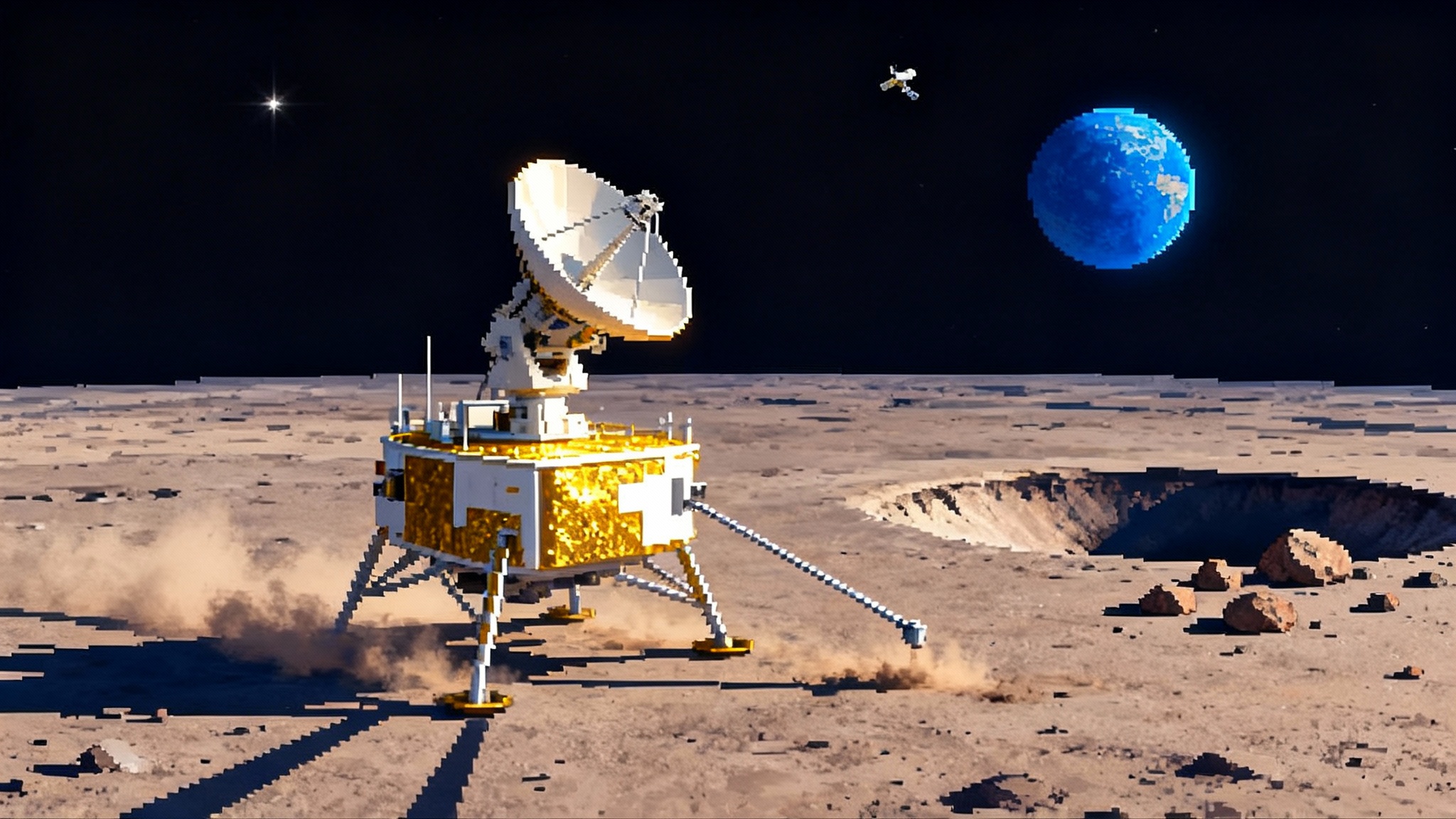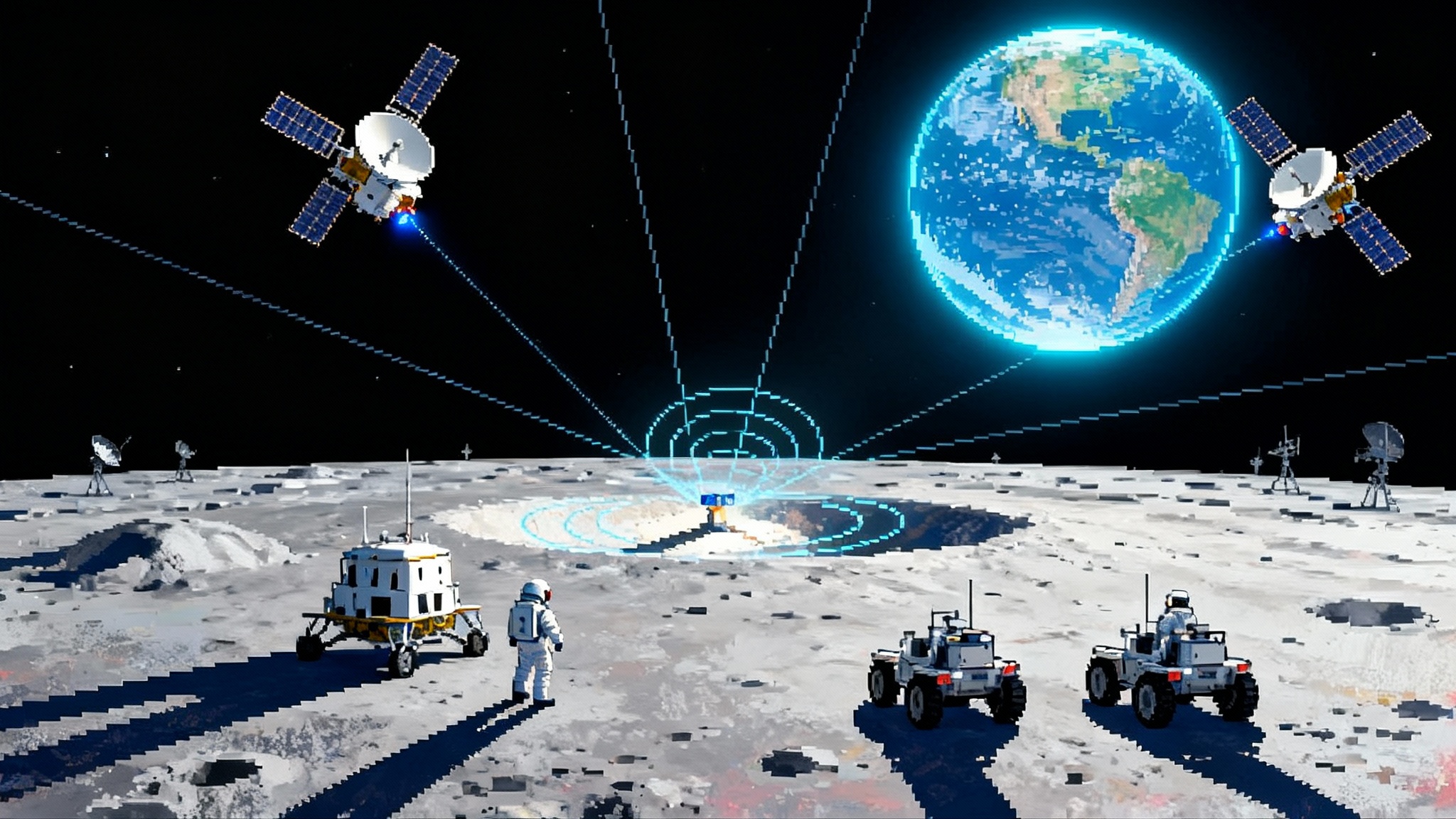Chang'e-6 far side samples rewrite the Moon's clock and map
Two peer-reviewed results from Chang'e-6 have set a new lunar clock and redrawn the resource map. A firm South Pole-Aitken impact age and evidence for a cooler, drier farside mantle now shape where we land, what we sample, and how we plan to live off the Moon.

The breakthrough: two numbers that move the Moon
In 2025, two peer-reviewed results from Chang'e-6 samples dropped like pins on a new lunar atlas. First, geochemists measured the mantle source beneath the farside's South Pole-Aitken region and found it to be strikingly dry. Their estimate, about 1 to 1.5 micrograms of water per gram of mantle source, sits at the low end of nearside values. That paper is the first direct mantle water measurement from the farside and narrows a decades-long debate about how wet or dry the Moon's interior really is. See the open-access analysis here: Nature paper on farside mantle water.
Second, another team dated norite fragments in the returned soil and pinned the age of the South Pole-Aitken impact to roughly 4.25 billion years. That single number is not trivia. It is a new anchor point for the entire lunar crater chronology, the reference curve scientists use to estimate the ages of surfaces across the Moon. The revised date nudges many units slightly older and tightens how we translate crater counts into time. The evidence chain is laid out in this study: SPA impact age at 4.25 Ga.
Put simply: one result recalibrates the Moon's timeline; the other redraws its resource map. Together they affect where we land, what we sample, and how we plan to live off the land.
The new timeline: what a 4.25 Ga SPA age changes
For half a century, crater counts guided by Apollo and Luna samples have served as the Moon's calendar. But the farside, especially within the South Pole-Aitken basin, lacked direct sample ages. With Chang'e-6 norites, we finally have a clock on the oldest well-preserved impact structure. An age of about 4.25 billion years has three concrete effects:
-
It sharpens early Solar System history. If SPA formed at 4.25 billion years, the decline of the earliest impact rates steepened sooner than some models assumed. That matters for when the crust solidified, when volatiles were delivered or lost, and when magmas rose.
-
It re-ages nearby terrains. Many south polar surfaces overlain by SPA ejecta now date a bit differently. When mission planners choose a boulder for sampling or a drill site for a core, the likely age bands shift. That changes the scientific return of each traverse meter.
-
It reframes comparative planetology. SPA is a benchmark used to calibrate cratering rates on Mars, Mercury, and asteroids. A firmer SPA age gives better error bars on ages for terrains across the inner Solar System.
Think of the SPA date as resetting the reference time on your phone. Every app that depends on time stamps gets more reliable. On the Moon, the "apps" are everything from lava flow timelines to impact flux models.
Cooler, drier mantle on the farside: what it really means
The farside mantle now looks cooler and drier than the nearside mantle. Here is why that is significant, and what it does not mean.
-
Why cooler and drier makes sense: The farside crust is thicker and poorer in radiogenic elements like thorium and potassium. Fewer heat producers and a thicker lid make a colder interior. A colder interior yields magmas that erupt less often and carry fewer dissolved volatiles. That matches the farside's sparse basalt plains compared with the lava-flooded nearside.
-
What it does not mean: It does not say anything direct about water ice at the south pole. Mantle dryness relates to ancient magmas, not the surface ice trapped in cold, sunless pockets at the poles. Those deposits formed mainly from external sources such as cometary and asteroidal delivery and solar wind hydrogen, then migrated and froze in permanent shadow. In other words, a dry mantle can coexist with icy crater floors.
-
Why the result matters to engineers: Drier mantle basalts and lower incompatible element content mean fewer easy chemical levers for extracting oxygen via ilmenite reduction in SPA basalts. The region still holds oxygen bound in oxides, but more energy and more robust reactors will be needed if you try to smelt it from local rock compared with some nearside, titanium-rich mare terrains.
Here is the practical takeaway: exploration on the farside will lean more on surface volatiles in cold traps and on imported consumables, and less on magmatic volatiles. Power and thermal design must assume colder subsurface conditions. This squares with the science and it removes false hope about volcanic water on the farside being an easy tap.
Landing-site priorities just shifted
The 4.25 billion year SPA anchor and the cooler, drier mantle tilt the chessboard for both NASA's Artemis campaign and the China-led International Lunar Research Station program.
-
Sample the SPA story on the rim, not only in the basin: South polar ridges and massifs that include SPA ejecta are now even more valuable because they carry time-capsule cobbles that bracket the impact. Sites near Shackleton, de Gerlache, and Malapert remain strong because they mix illumination for power, line-of-sight communications, slopes a rover can handle, and access to blocks of deep crust and SPA ejecta. For the transportation context shaping these choices, see how orbital refueling will decide the Moon.
-
Prefer PSR adjacency, not deep PSR landings, for first operations: A base that sits within a few kilometers of permanently shadowed regions allows scouting and caching without committing to 24-hour darkness on day one. This keeps navigation, thermal control, and power simpler while still letting crews or robots touch ice-rich regolith.
-
On the farside, add relay capacity and seismic context: The new chronology begs for geophysical context in SPA. Landing near Schrödinger basin, inside SPA, offers access to young impact melt and to deep crustal materials thrown up by the peak ring. Seismic and heat-flow data there would test the "colder farside mantle" model in situ and tie samples to interior structure.
-
Target diversity, not just safety: Artemis and ILRS need a portfolio of sites that sample distinct stories. One site adjacent to a shadowed crater for volatiles. One on SPA rim ejecta for early crust and impact history. One on exposed mare basalt for petrology and oxygen extraction trials. Each should earn its logistics footprint by answering a unique question.
ISRU at the south pole: what is realistic now
No one wants to design a mission around a myth. Here is a grounded view of what the new results imply for in situ resource utilization in the south polar zone.
-
Water for life support and propellant: The working model is unchanged. The best water is still in permanently shadowed regolith. Drier farside mantle does not affect that. The real constraints are deposit geometry, grain-scale pore ice versus cemented layers, boulder cover, and trafficability. The correct tool chain is prospecting first, then shallow trenching and coring, then scaled extraction. Drills and volatile capture systems must handle cemented regolith, glass fragments, and low temperatures that defeat seals and hoses.
-
Oxygen from rock: South polar highlands are rich in plagioclase, which locks oxygen in aluminum and silicon oxides. Oxygen is there in abundance, but it costs energy and materials to extract. Molten regolith electrolysis and carbothermal reduction are promising, but they require multi-kilowatt steady power, refractory reactors, and dust-tolerant seals. The farside's low titanium content means you cannot count on ilmenite-rich feedstock in SPA to run the simplest hydrogen reduction schemes at scale. Plan for electrolysis pilots on anorthositic soil rather than banking on ilmenite.
-
Metals and construction: SPA basalts and impact melt rocks are good for aggregate and sintering. If you intend to 3D print berms and pads, the cooler mantle inference suggests fewer late-stage, volatile-rich glasses and more crystalline material. That is good for mechanical strength and thermal stability, but sintering recipes will need to adjust for grain size and composition.
A useful metaphor here is mining on Earth: you do not build the refinery before the road. The Moon's road is a reliable map of ice and a simple, robust pilot plant. The new geochemistry tells you not to over-design around magmatic water; instead, design for cold-trap water and hard-won oxygen.
The next 12 to 24 months that will accelerate everything
Two calendars matter to planners today: the mission calendar and the lab calendar.
-
Artemis II and III: As of November 14, 2025, Artemis II is targeting no earlier than February 5, 2026 for a ten-day lunar flyby with four astronauts. Artemis III, the first landing attempt of this era, is planning for mid 2027 at the south pole. Neither flight will directly sample farside SPA materials, but both will fix operations, comms, and reentry constraints that define every later surface mission.
-
CLPS to Schrödinger basin: NASA's Commercial Lunar Payload Services flight to the farside is headed to Schrödinger, within SPA. It will try to deliver a seismometer suite and other instruments. Success there would create the first seismic baseline on the farside. Even partial data will help interpret Chang'e-6 petrology in terms of interior structure and temperature.
-
Chang'e 7 and Chang'e 8: China's next south polar mission aims to scout volatiles with a hopper into shadow and a rover on sunlit ground, supported by relay communications. Chang'e 8 is planned to follow with more advanced in situ experiments that include construction and resource tech. For a broader look at China's deep-space playbook, see Tianwen-2's two-stop gamble.
-
LUPEX, the Japan-India rover-lander: The Lunar Polar Exploration Mission, a joint JAXA-ISRO effort with a drill to meter-plus depth, is slated no earlier than 2026. Its core value is ground truth for volatile distribution and form. If LUPEX drills near a shadowed rim, we will finally learn how ice is layered with regolith and how it responds to bit heat and friction.
-
Laboratories on Earth: Expect a wave of follow-on Chang'e-6 papers using NanoSIMS, Secondary Ion Mass Spectrometry, atom probe tomography, and noble gas mass spectrometry. Watch for three threads in particular. First, hydrogen isotope fingerprints that distinguish solar wind water from deep magmatic signatures. Second, diffusion profiles in melt inclusions that pin cooling rates and ascent histories. Third, additional geochronology on clasts that refine the age structure around 4.25 and 3.87 billion years. As allocations broaden to more labs, cross-checks will either tighten the numbers or expose sample bias. Either way, mission planners win.
A practical playbook for Artemis and ILRS teams
Here are concrete actions, with the why and the how.
-
Put SPA ejecta in the sampling bag. Why: the 4.25 billion year anchor magnifies the scientific value of every SPA-derived cobble. How: pick traverses that cross boulder-rich talus sourced from SPA rim units; use portable spectrometers on EVA to pre-select targets with plagioclase-rich signatures.
-
Treat cold traps as measured resources, not assumptions. Why: mantle dryness does not change polar ice potential, but deposit geometry is poorly constrained. How: stage a prospecting sequence that starts with neutron and infrared scouts, then trenches and shallow cores, then a modest capture-and-measure pilot. Integrate vapors, not just solids, into measurement plans.
-
Pilot oxygen from anorthositic fines, not hypothetical ilmenite. Why: farside basalts are low in titanium; polar highlands dominate the terrain near many south polar sites. How: fly a molten regolith electrolysis breadboard that can run at tens of kilograms per day and survive off-nominal grain size and glass content.
-
Assume colder subsurface conditions in designs. Why: a cooler farside mantle implies lower background heat flux and possibly firmer, more brittle regolith in places. How: pre-heat bits, derate battery discharge at very low regolith temperatures, and budget extra energy for thermal management on drills and sample lines.
-
Keep communications simple until you must complicate them. Why: farside landings need relay assets; nearside south polar sites within line of sight reduce early risk. How: pick sites that maintain frequent Earth visibility and build in contingency relay just for PSR sorties.
-
Share the samples, share the calibration. Why: the SPA age is a shared standard. How: align dating protocols between Chinese, American, European, Indian, and Japanese labs; publish cross-lab blind intercomparisons for U-Pb, Pb-Pb, and Ar-Ar ages on the same clasts or splits.
The bigger story, and why it matters
If the Moon is our training ground for Mars, then the calendar and the resource ledger are the two documents the crew chief keeps in a back pocket. Chang'e-6 has updated both. The basin that frames the south pole now has a firm birth date, and the farside mantle we are about to explore is colder and drier than many expected. That tightens the science and makes the engineering more honest. It tells Artemis and ILRS planners where the high-value rocks lie and what not to promise from the wrong kind of soil. Most of all, it shows that one well-chosen sample return can steer the next decade of exploration. The clock is set, the map is cleaner, and the next landers have a clearer brief. That is how real progress looks in spaceflight: one hard-won number at a time, and a smarter route because of it.








